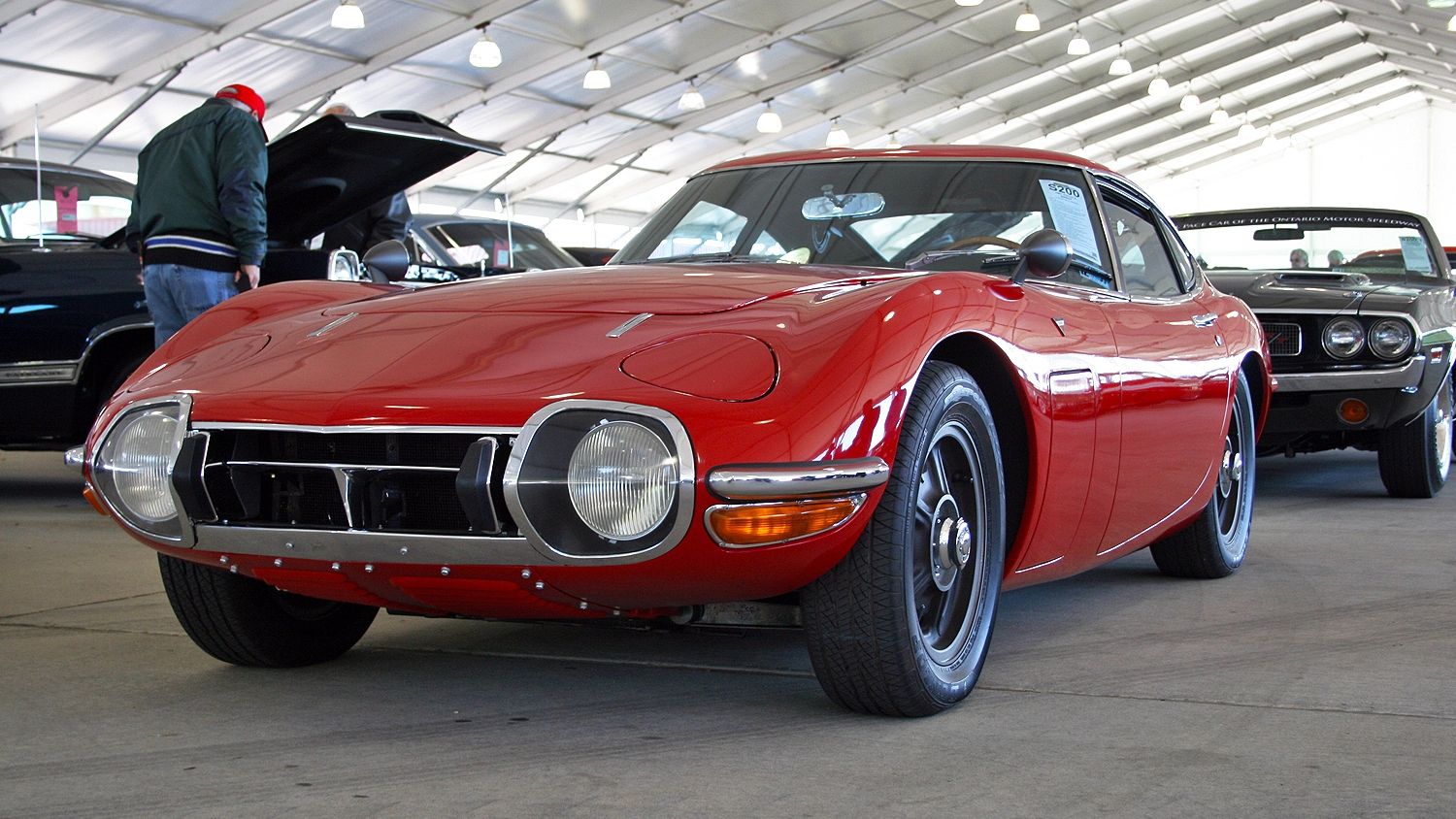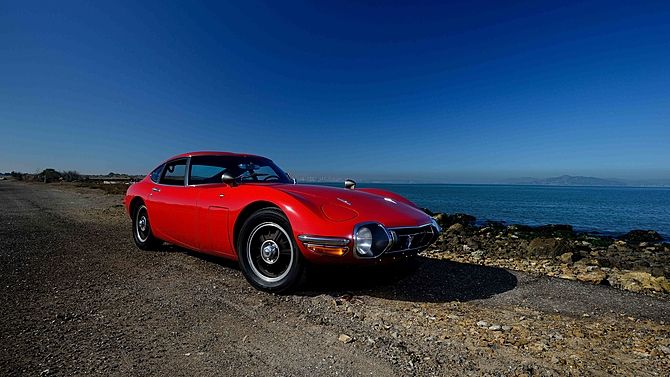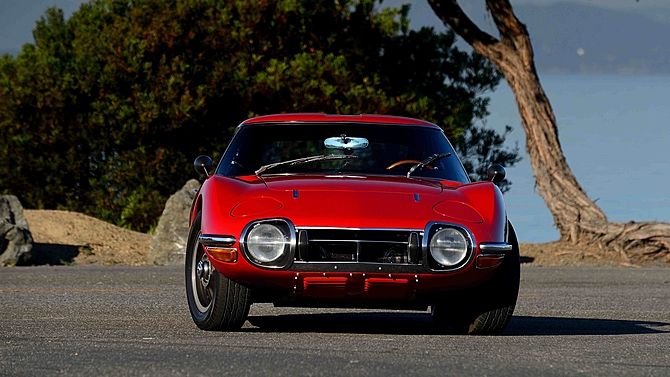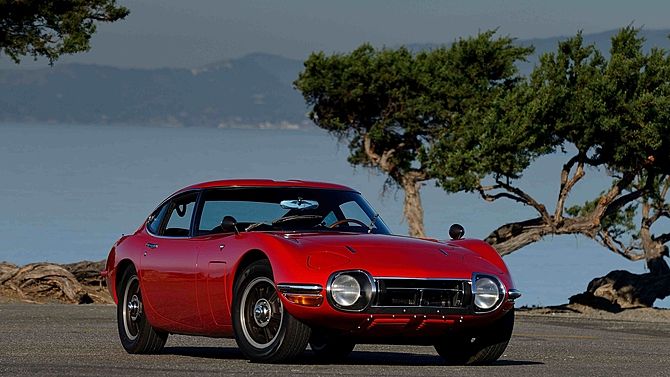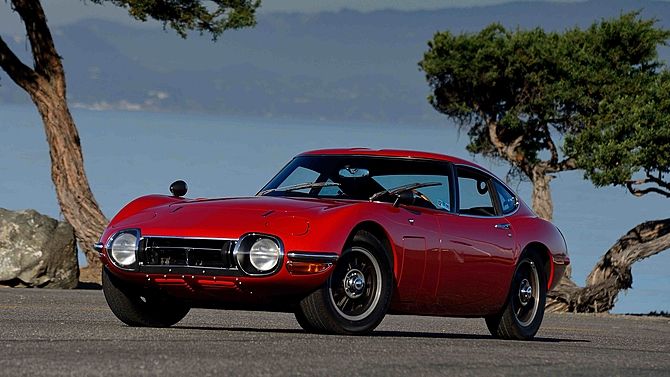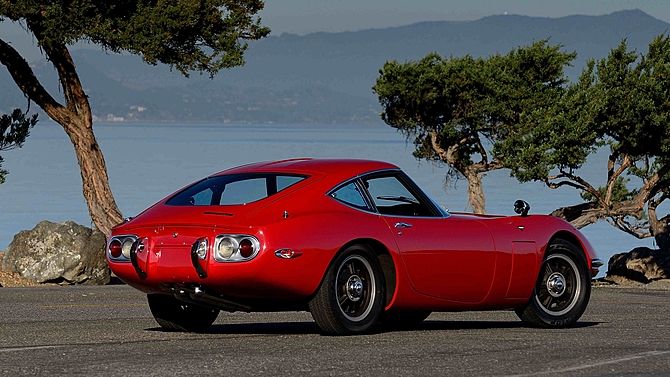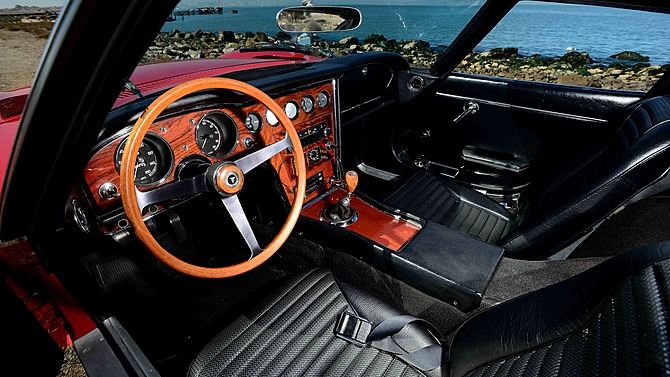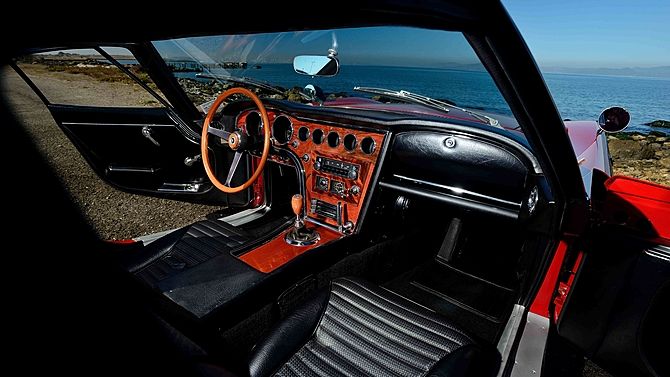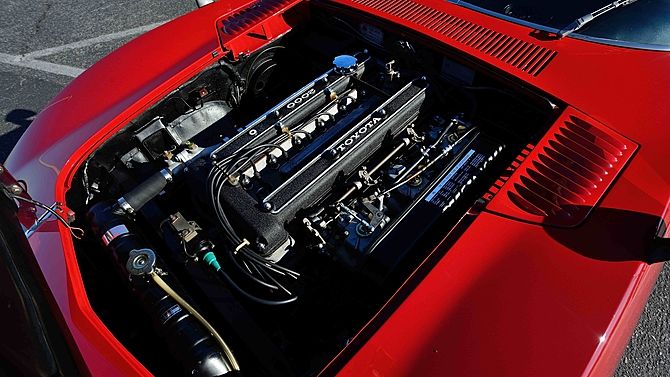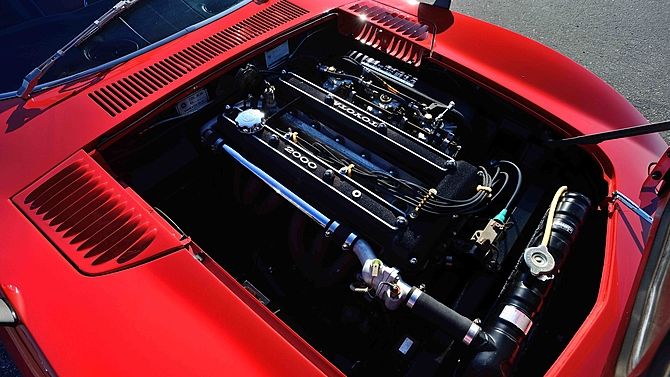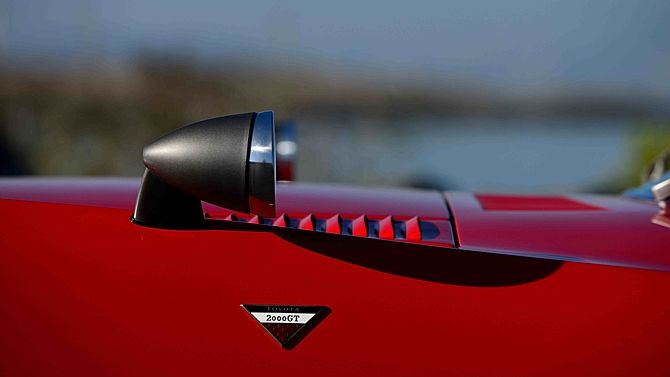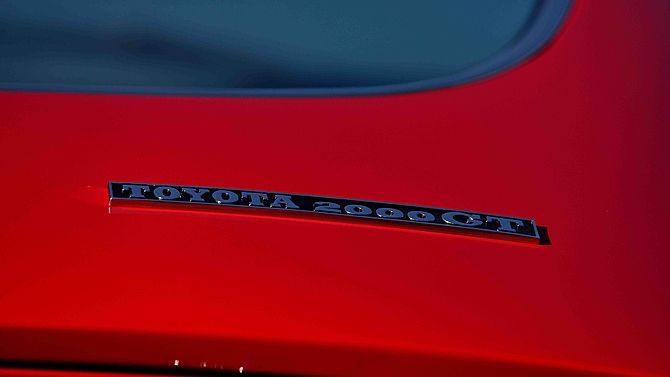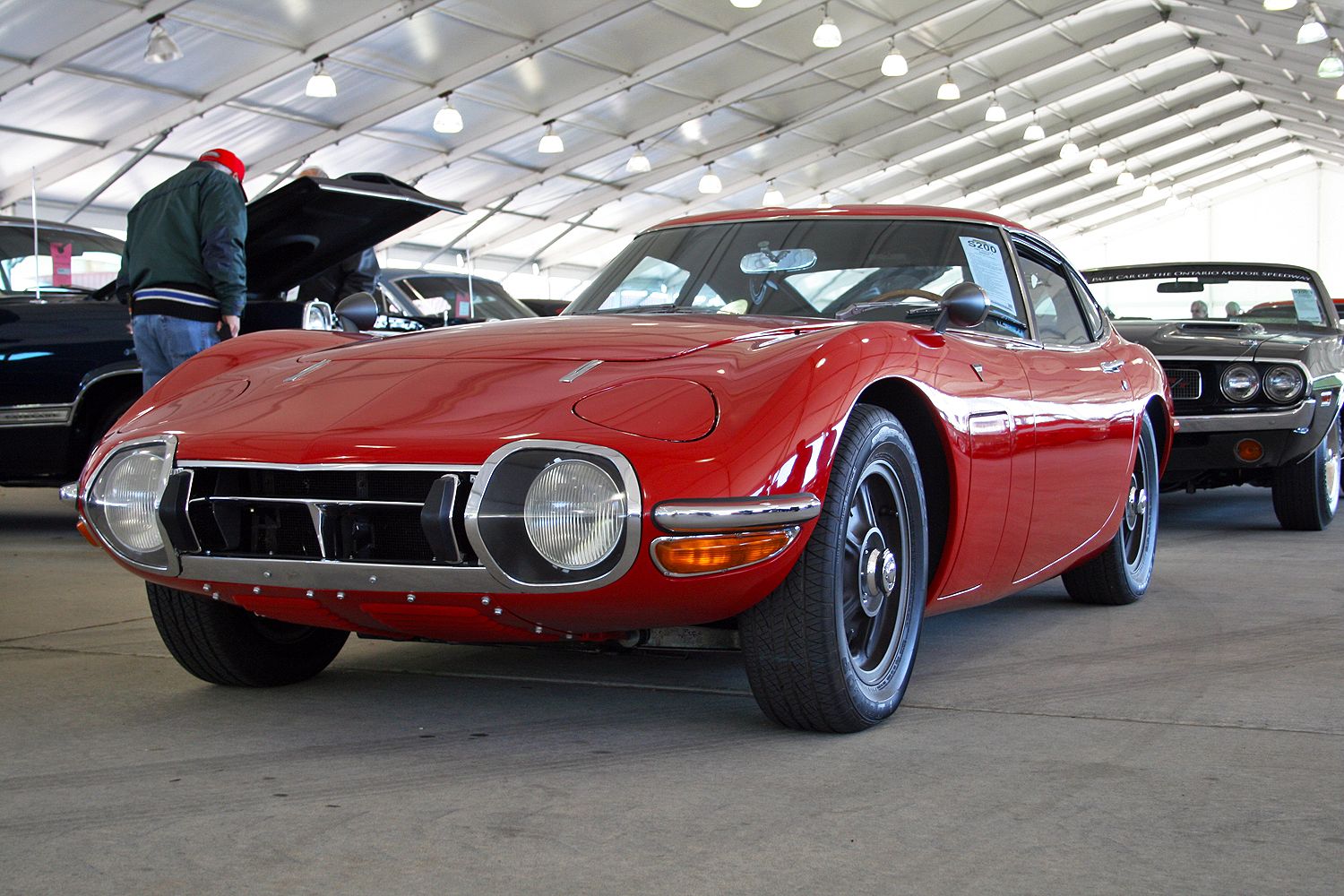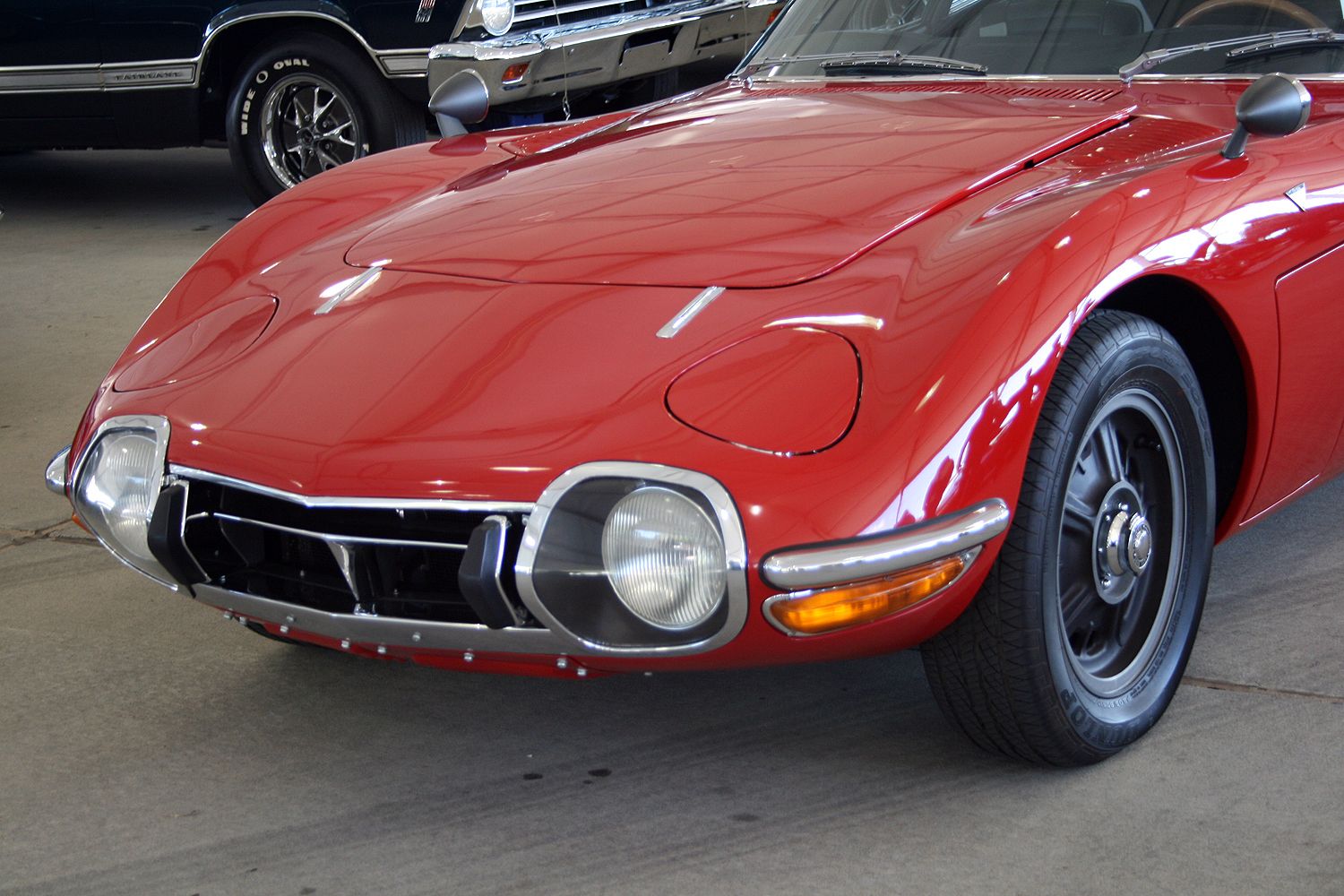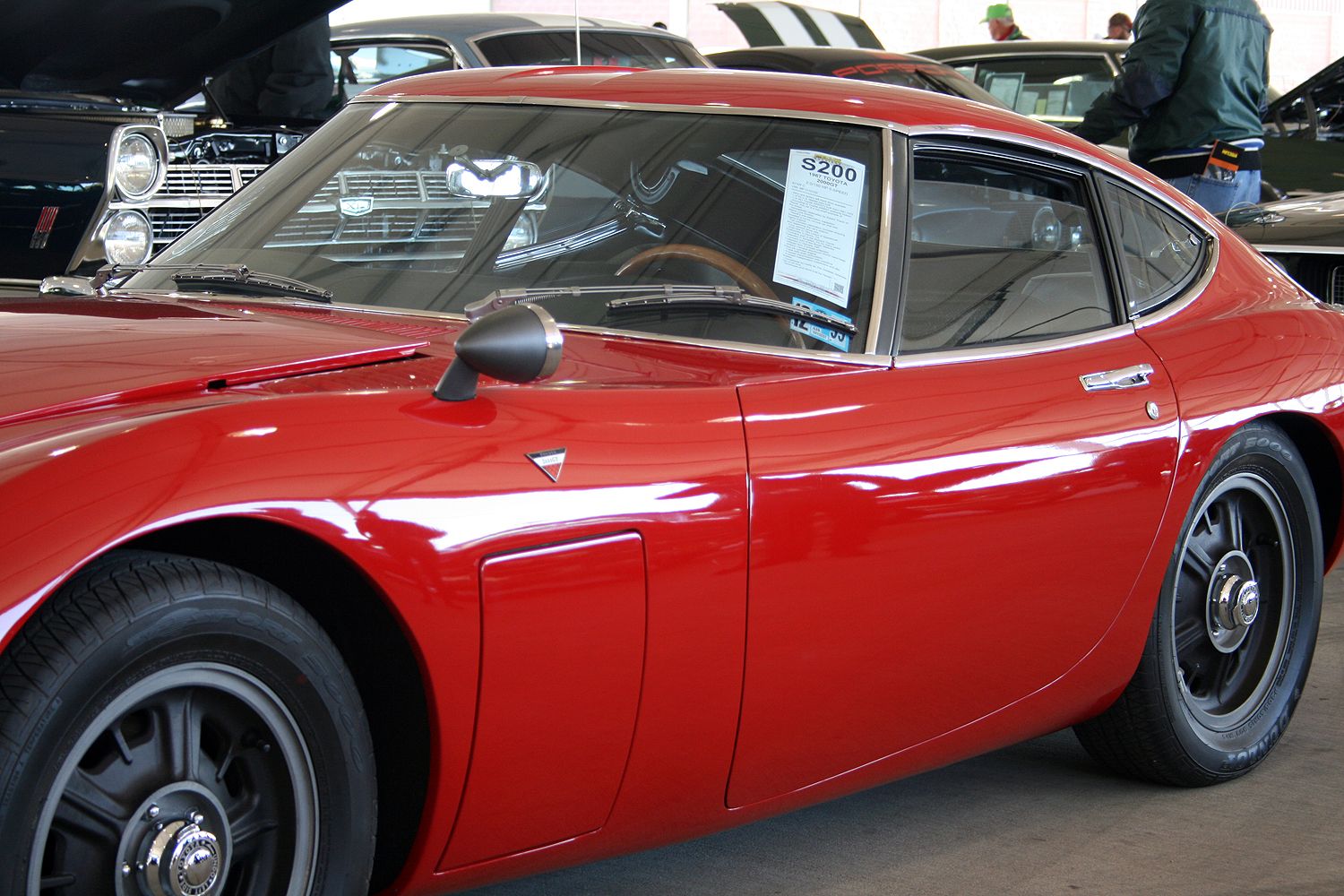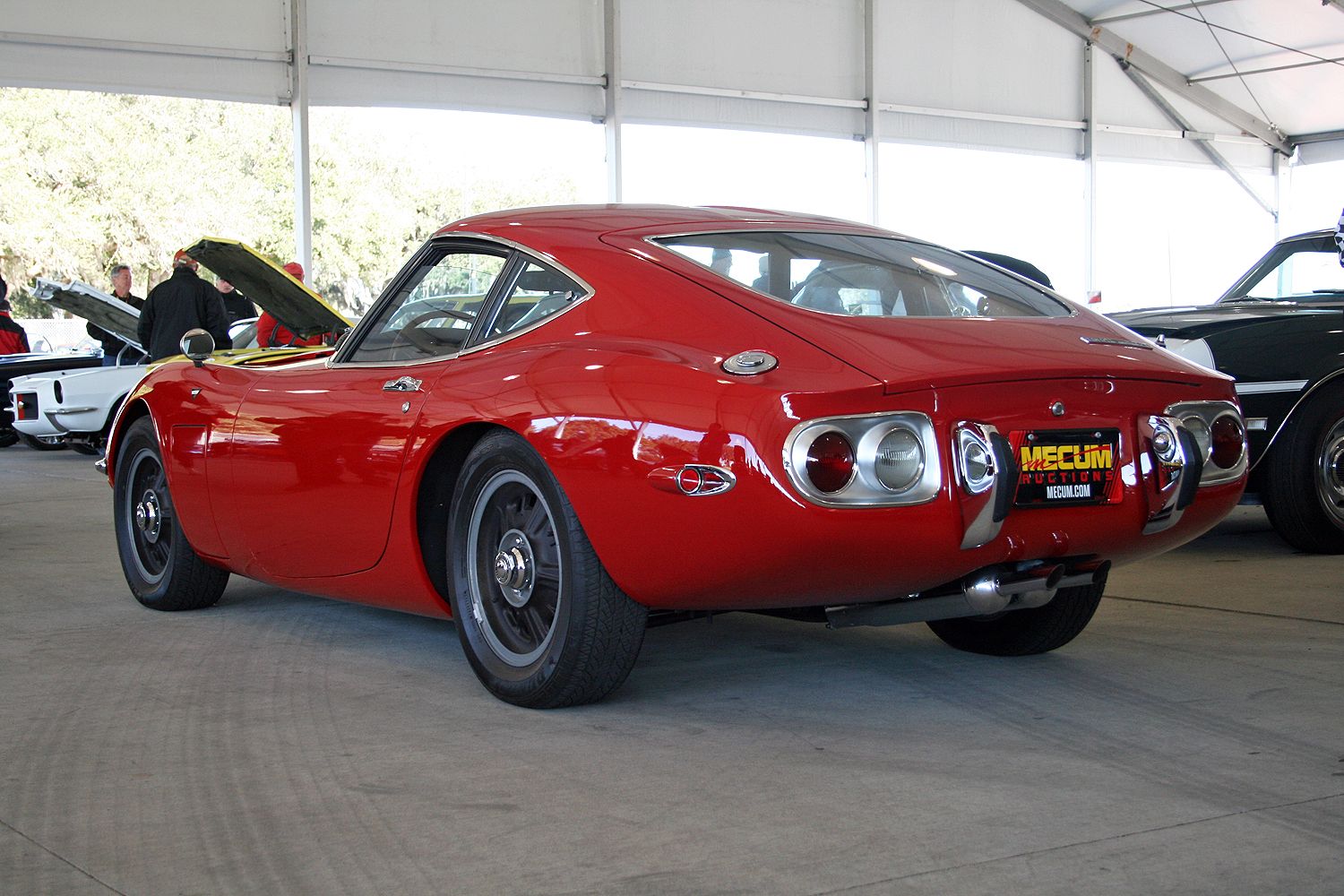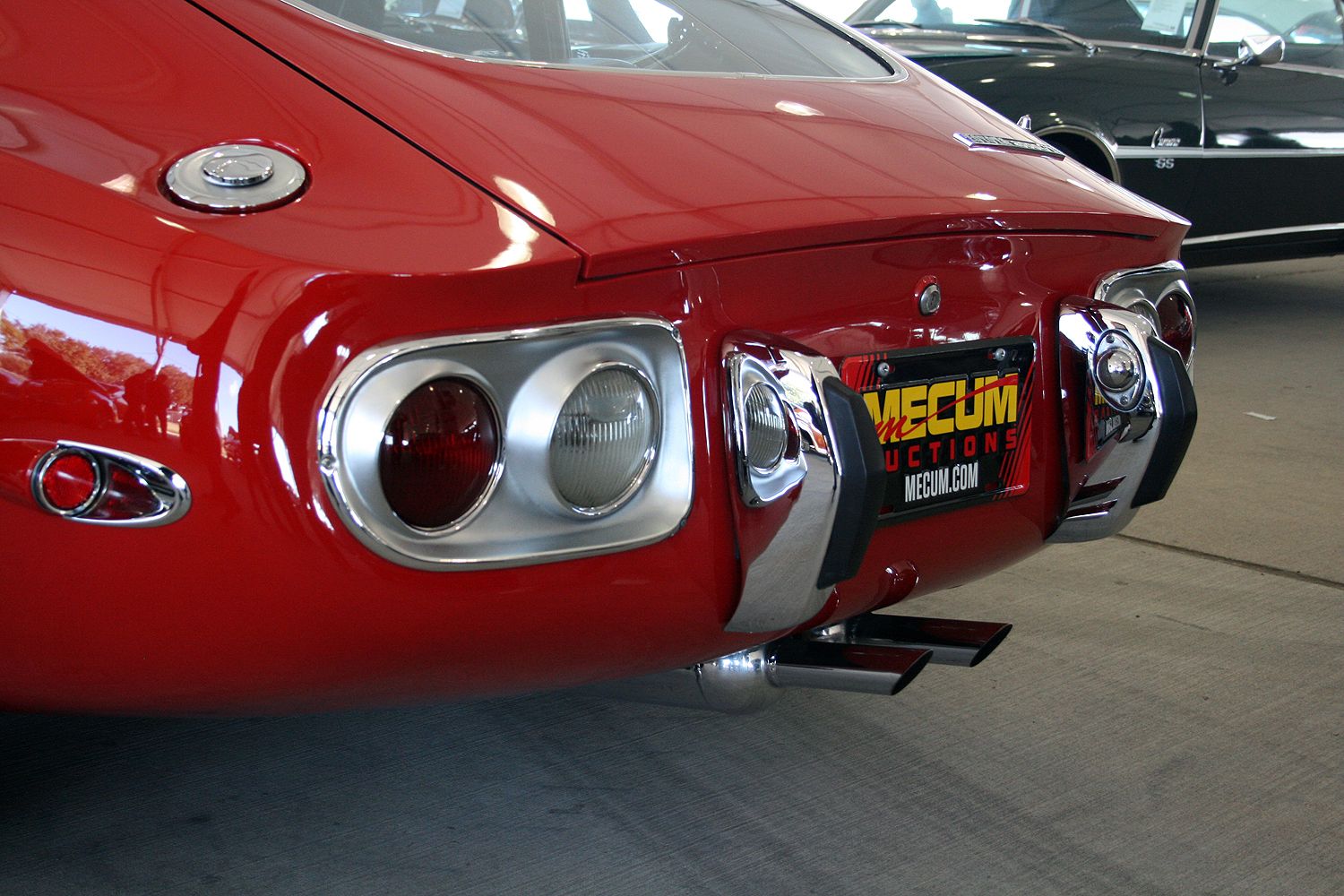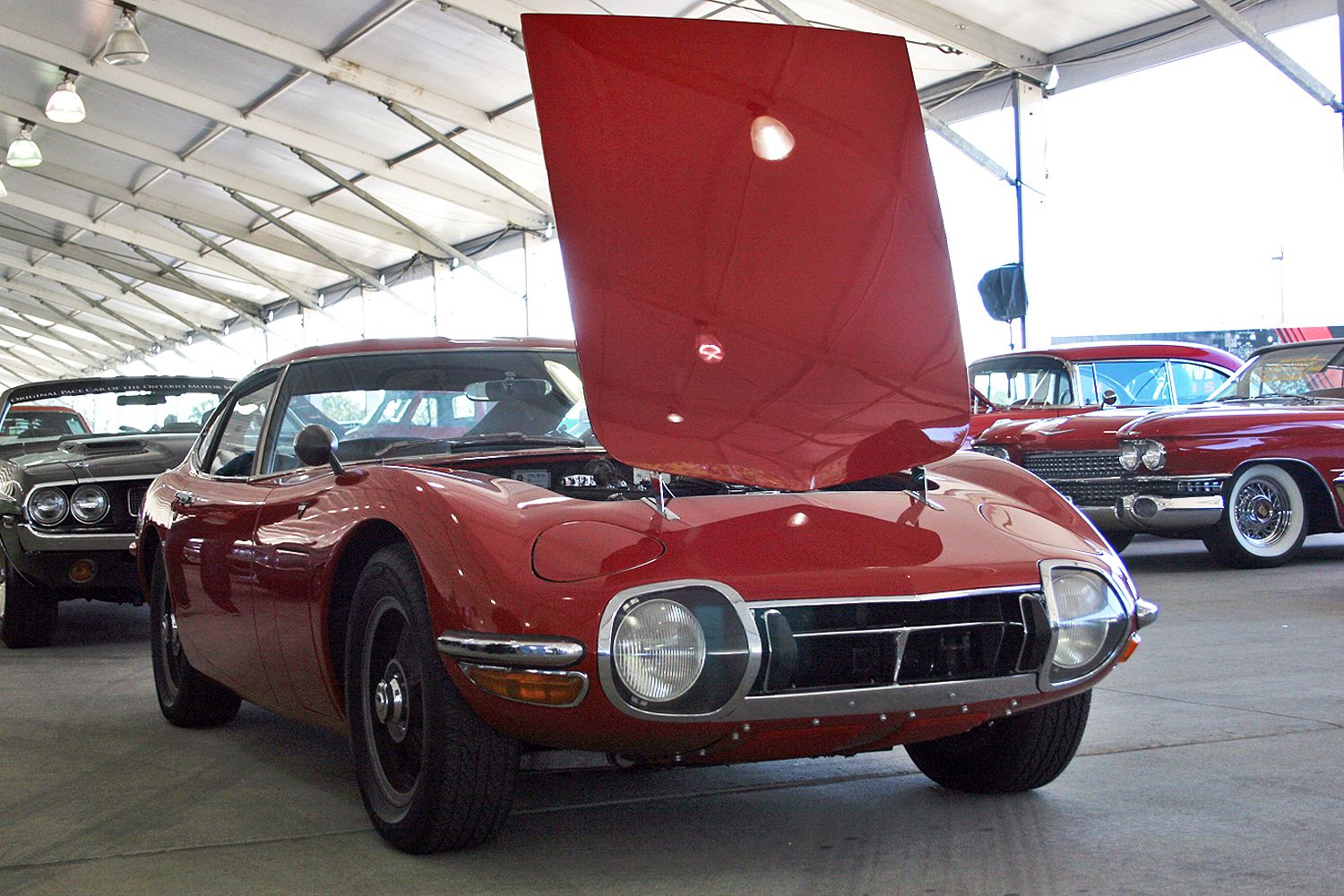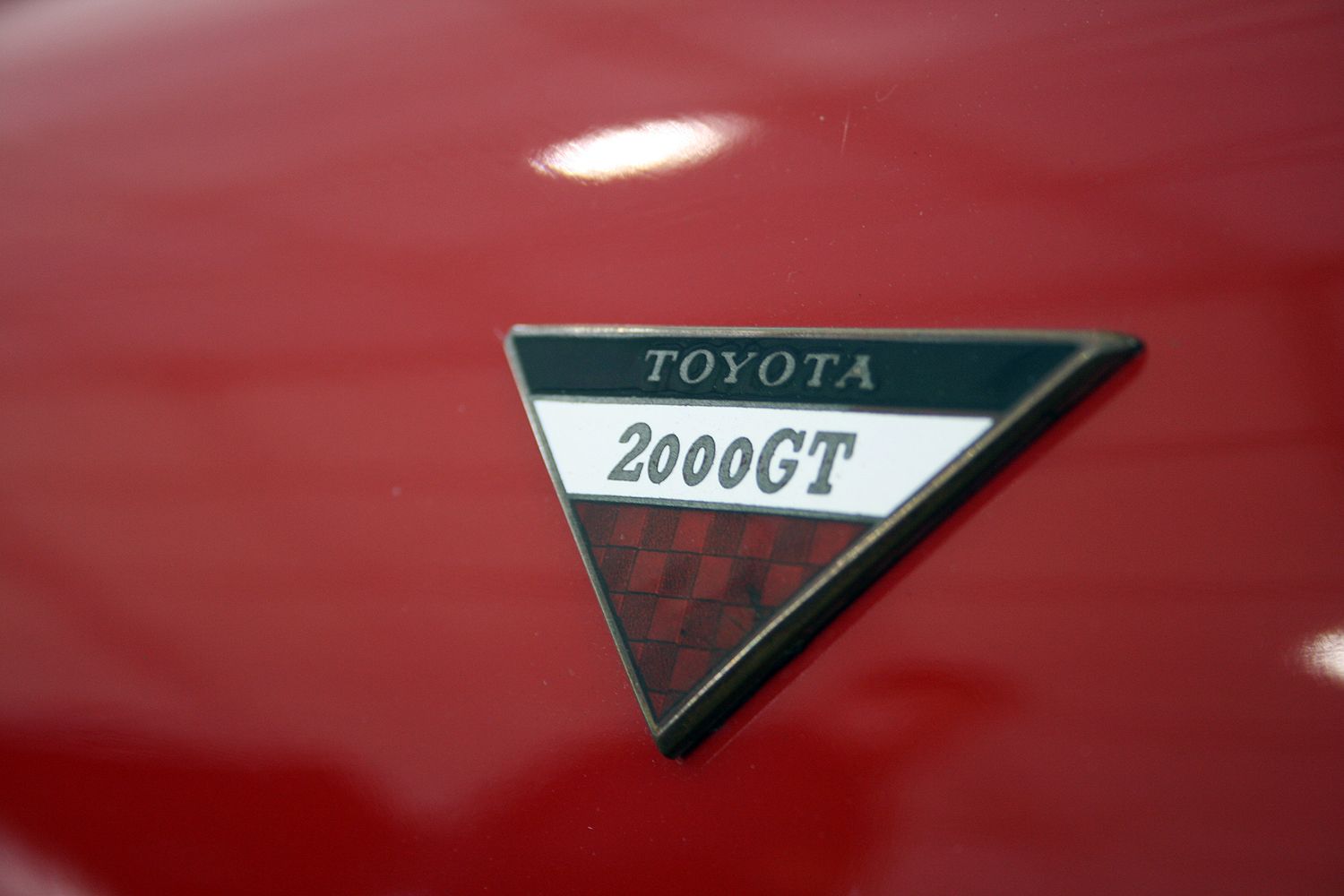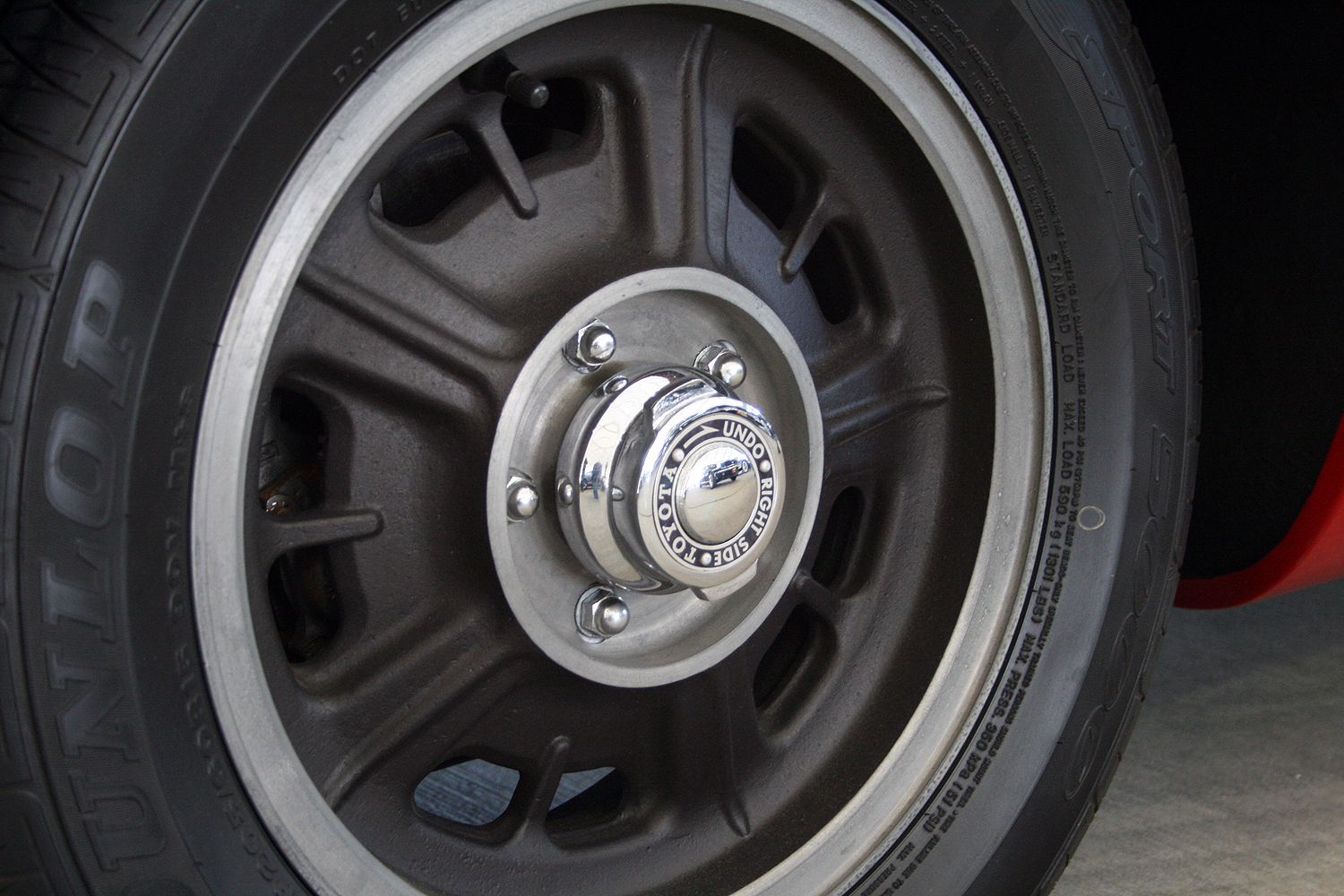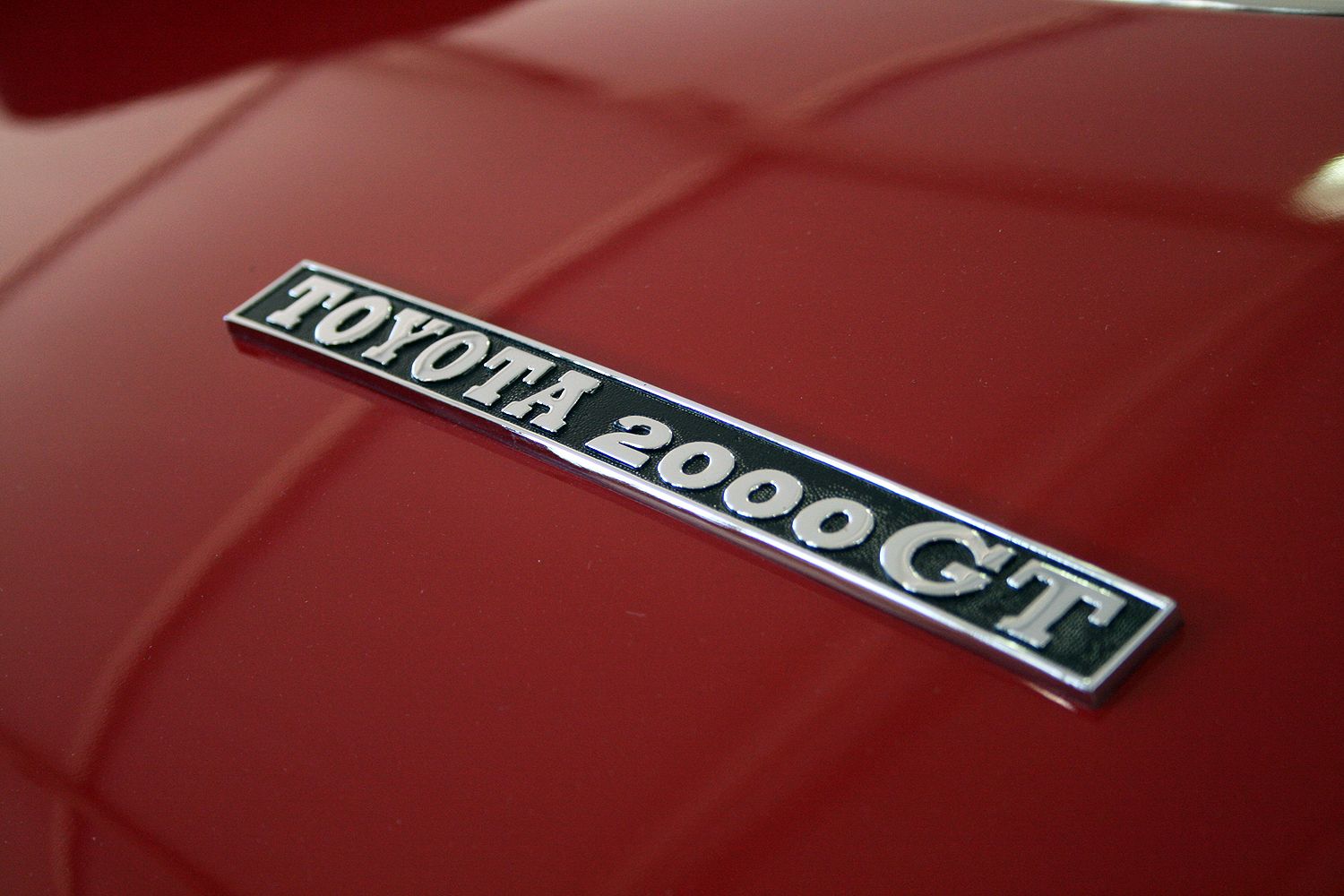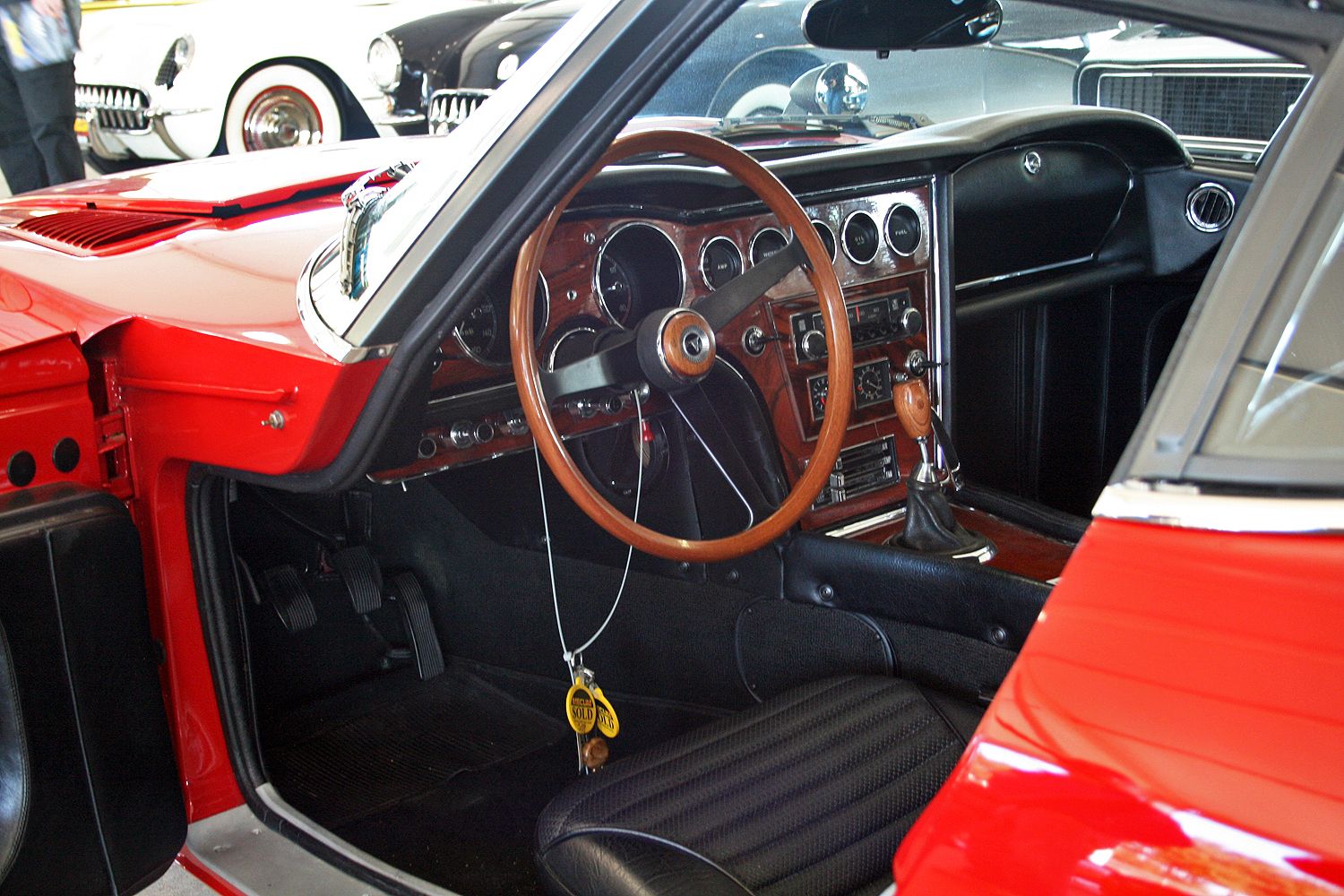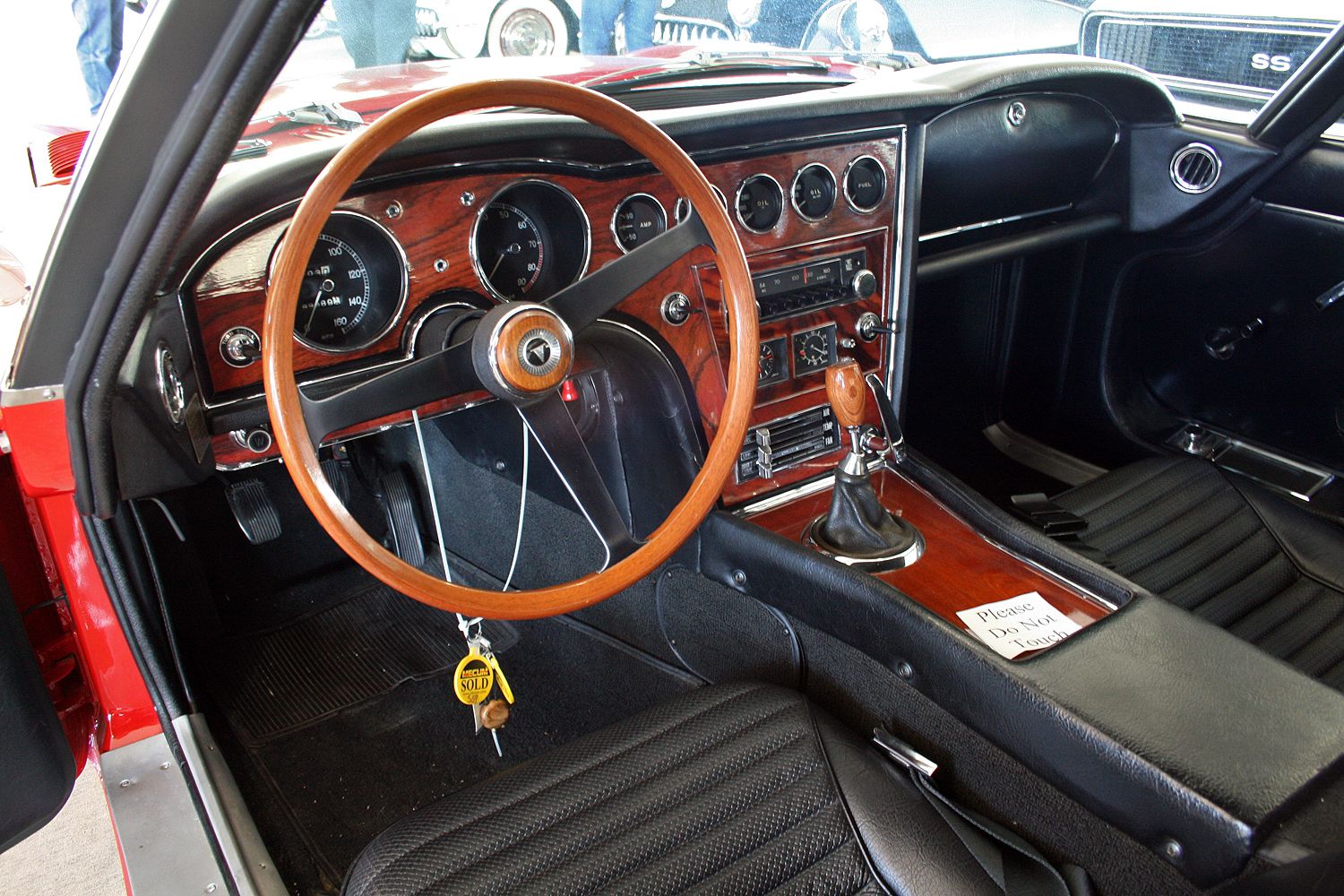Toyota Motor Corp->ke88 recently caught wind that a privately owned 1967 Toyota 2000GT would be up for auction at the 2016 Mecum Auction in Kissimmee, Florida. The pristine coupe had a chance at breaking the record for the most expensive Asian car sold at auction – a record set in 2013 with another 2000GT->ke1733 going for a staggering $1.16 million. To catch the action, I was invited down to watch the gavel fall.
That staggering value comes in part to the 2000GT’s low build numbers, its hand-built nature, and its rich heritage. Only 351 units were ever built, of that, only 62 were left-hand drive, built for shipment to the United States. When new, the 2000GT was expensive, selling for roughly $6,000 in 1967, however values had tripled within a decade. Pristine examples were selling for more than $18,000 by the late 1970s, securing the 2000GT’s future as a collectible.
The 2000GT got its start with Toyota decided to compete with high-strung European cars like the Jaguar E-Type->ke1246 and Porsche 901. Elsewhere in Japan, Yamaha was working with Nissan to build a four-cylinder sports car->ke506 called the A550X. Yamaha had significant investments tied into the car when Nissan->ke62 decided to cancel its portion of the build, leaving Yamaha in the cold. The company, which is also known for making professional-grade musical instruments, took its sports car idea to Nissan’s main rival, Toyota, which immediately embraced the extra help.
Continue reading for more information
1967 Import Values On the Rise: 1967 Toyota 2000GT Misses $800k Reserve at Mecum Auction
- Make: Array
- Model: 1967 Import Values On the Rise: 1967 Toyota 2000GT Misses $800k Reserve at Mecum Auction
- Engine/Motor: inline-4
- Horsepower: 150
- Torque: 130
- [do not use] Vehicle Model: Array
Yamaha’s contributions to the 2000GT were significant. The GT’s 2.0-liter four-cylinder uses a Toyota-sourced iron block, but the alloy Hemi heads, forged pistons, and triple two-barrel, side-draught carburetors all came from Yamaha. Yamaha’s wood craftsmen, used to building pianos and guitars, hand-built the 2000GT’s rosewood dash and console, along with the Mahogany steering wheel and shifter knob.
The car’s overall design was purposeful, meant to evoke a certain style yet offer world-dominating handling. Its frame features a center beam construction with Y-sections at each end. This would also be Toyota’s first vehicle with a four-wheel independent suspension system and four-wheel disc brakes – both being state-of-the-art equipment in its day.
This particular example was owned by racing legend Otto Linton before trading hands between three collectors, lending to this particular car’s value. Mecum Auctions predicted the car could sell anywhere between $800,000 to $1 million, putting it very close to the standing record. Sadly for its current owner, the audience didn’t pony up enough funds to break its reserve, with bidding stopped at $775,000. Perhaps had another collector (or more precisely, the right collector) been present, the car would have sold.
It just goes to show how unpredictable auctions can be. What’s more, it serves as a reminder of how valuable early Japanese sport cars have inflated in value, rising to the ranks of post-war Mercedes and Porsches.
Why It Matters
The Toyota 2000GT may not have sold this time, but this striking example of JDM history will no doubt remain a highly-prized treasure from Japan’s motoring past. Values will only increase over time and with such clean examples becoming harder to find. Seeing the car in person brings a whole new appreciation for the craftsmanship and beauty of the 2000GT. Its short stature, relatively long wheelbase, and front-midship-mounted engine design leaves no question as to why the car did so well in races, including taking the victory in the 1967 Fuji 24 Hours.
1967 Toyota 2000GT
Read our full review on the 1967 Toyota 2000GT here.

